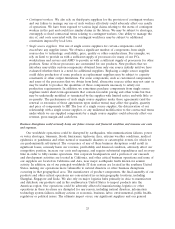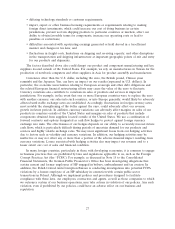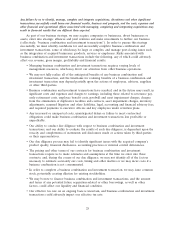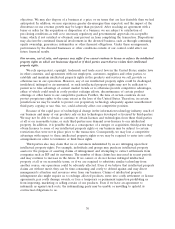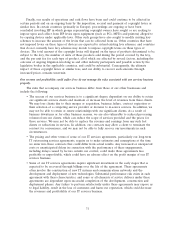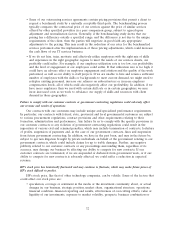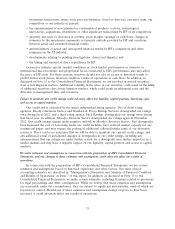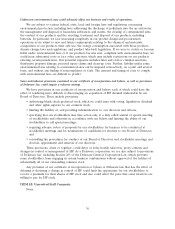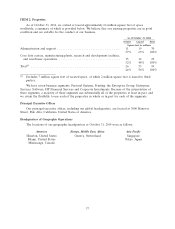HP 2014 Annual Report Download - page 36
Download and view the complete annual report
Please find page 36 of the 2014 HP annual report below. You can navigate through the pages in the report by either clicking on the pages listed below, or by using the keyword search tool below to find specific information within the annual report.Any failure by us to identify, manage, complete and integrate acquisitions, divestitures and other significant
transactions successfully could harm our financial results, business and prospects, and the costs, expenses and
other financial and operational effects associated with managing, completing and integrating acquisitions may
result in financial results that are different than expected.
As part of our business strategy, we may acquire companies or businesses, divest businesses or
assets, enter into strategic alliances and joint ventures and make investments to further our business
(collectively, ‘‘business combination and investment transactions’’). In order to pursue this strategy
successfully, we must identify candidates for and successfully complete business combination and
investment transactions, some of which may be large or complex, and manage post-closing issues such
as the integration of acquired businesses, products, services or employees. Risks associated with
business combination and investment transactions include the following, any of which could adversely
affect our revenue, gross margin, profitability and financial results:
• Managing business combination and investment transactions requires varying levels of
management resources, which may divert our attention from other business operations.
• We may not fully realize all of the anticipated benefits of any business combination and
investment transaction, and the timeframe for realizing benefits of a business combination and
investment transaction may depend partially upon the actions of employees, advisors, suppliers
or other third-parties.
• Business combination and investment transactions have resulted, and in the future may result, in
significant costs and expenses and charges to earnings, including those related to severance pay,
early retirement costs, employee benefit costs, goodwill and asset impairment charges, charges
from the elimination of duplicative facilities and contracts, asset impairment charges, inventory
adjustments, assumed litigation and other liabilities, legal, accounting and financial advisory fees,
and required payments to executive officers and key employees under retention plans.
• Any increased or unexpected costs, unanticipated delays or failure to meet contractual
obligations could make business combination and investment transactions less profitable or
unprofitable.
• Our ability to conduct due diligence with respect to business combination and investment
transactions, and our ability to evaluate the results of such due diligence, is dependent upon the
veracity and completeness of statements and disclosures made or actions taken by third-parties
or their representatives.
• Our due diligence process may fail to identify significant issues with the acquired company’s
product quality, financial disclosures, accounting practices or internal control deficiencies.
• The pricing and other terms of our contracts for business combination and investment
transactions require us to make estimates and assumptions at the time we enter into these
contracts, and, during the course of our due diligence, we may not identify all of the factors
necessary to estimate accurately our costs, timing and other matters or we may incur costs if a
business combination is not consummated.
• In order to complete a business combination and investment transaction, we may issue common
stock, potentially creating dilution for existing stockholders.
• We may borrow to finance business combination and investment transactions, and the amount
and terms of any potential future acquisition-related or other borrowings, as well as other
factors, could affect our liquidity and financial condition.
• Our effective tax rate on an ongoing basis is uncertain, and business combination and investment
transactions could adversely impact our effective tax rate.
28









